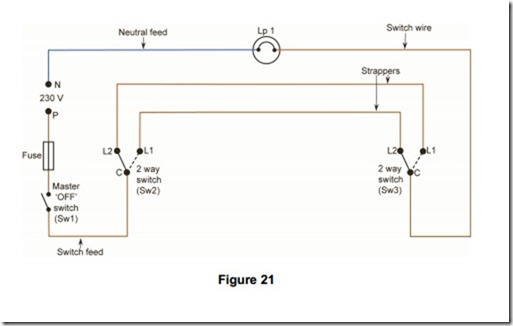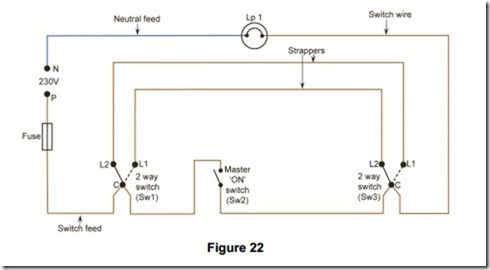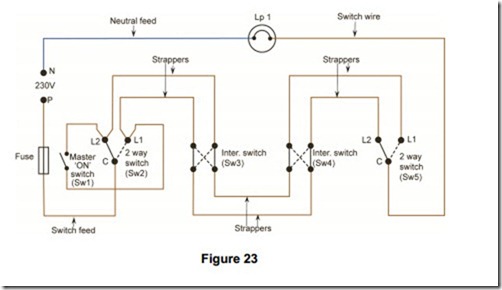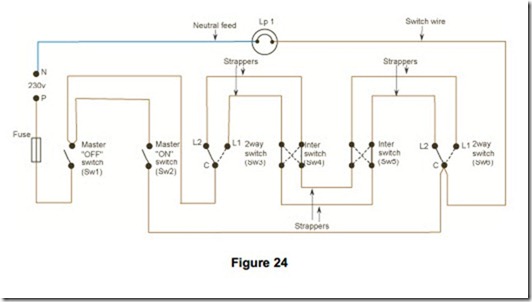Master Switching
Lighting in public buildings such as hospitals, schools, colleges is often controlled in such a way that a caretaker can lock the lights “OFF” or “ON” or leave them under the control of the normal circuit switches. Master switches should be located in an area such as a caretakers / supervisors office, which is not accessible to the public.
Master “Off” Switching
A master “OFF” switch is used to lock the lights in the “OFF” position. This means that the normal circuit switches cannot switch the lights ”ON”. A simple one way switch can be used to perform this function regardless of how the lighting is controlled by the normal circuit switches. It is connected in series with the normal circuit switch or switches.
Figure 21 shows Two Way plus Master “OFF” control.
Master “On” Switching
A master “ON” switch is used to lock the lights in the “ON” position. This means that the normal circuit switches cannot switch the lights”OFF”. A simple one way switch can be used to perform this function regardless of how the lighting is controlled by the normal circuit switches. It is connected in parallel with the normal circuit switch or switches.
Figure 22 shows Two Way plus Master “ON” control.
In the case of two way or two way and intemediate switching, a master “ON” switch may be connected in such a way that it shorts out a pair of strappers at either end. This allows for the connection of the master “ON” switch at either of the two way switches or at any intermediate switch.
Figure 23 shows Two Way and Intermediate, plus Master “ON” control.
Master “Off” and Master “On” Switching Combined
Master “Off” and Master “On” Switching may be required on the same switching circuit. The master “ON” switch may be connected either way as desired. The master “OFF” switch must override the master “ON”.
Figure 24 shows Two Way and Intermediate, plus Master “OFF” and“ON” control.



